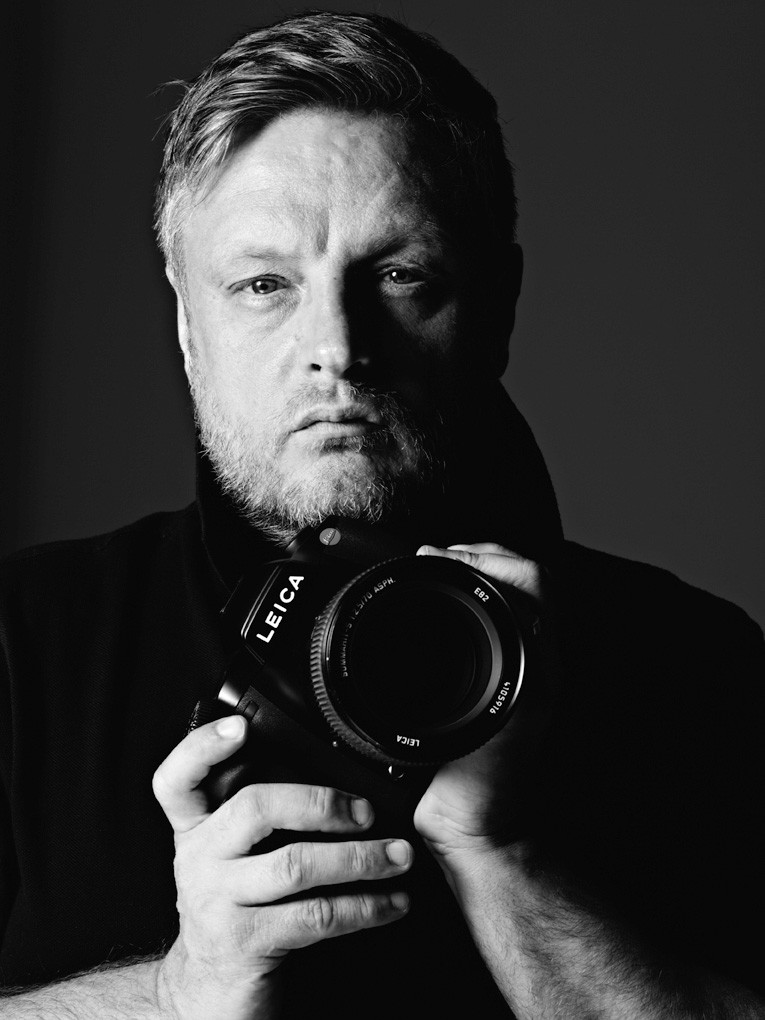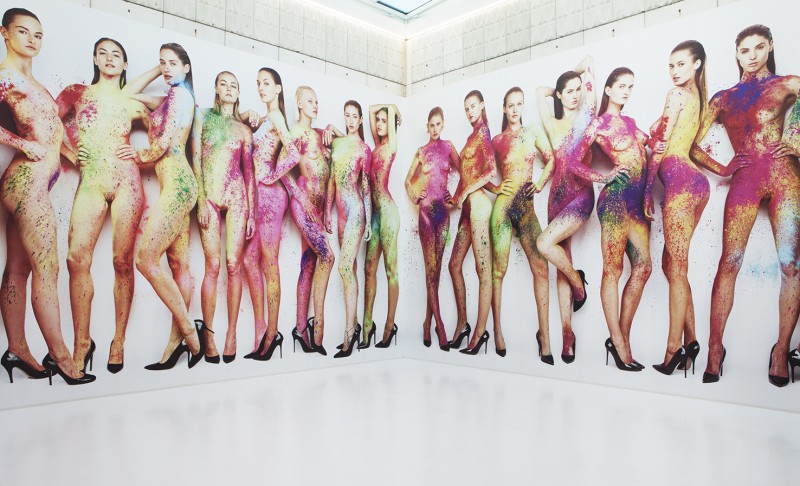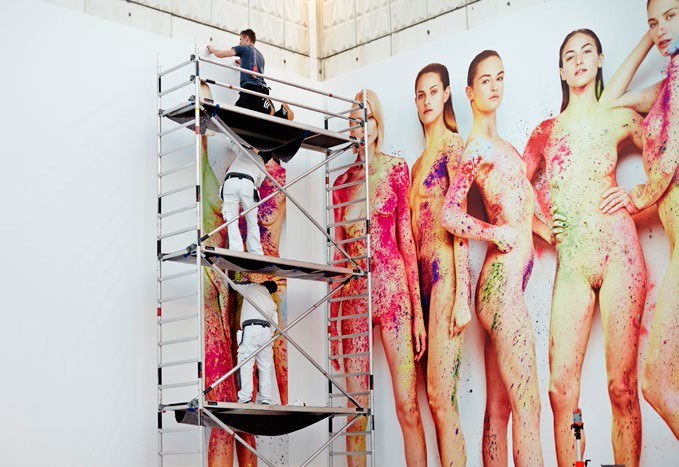Interview
Less is More, a solo exhibition by Rankin, continues on display at the Kunsthalle Rostock up until February 28, 2016. Exclusively for the S Magazine, the artist describes how the museum's opulent space inspired the impressive “white cube” installation with its 7-metre blow-ups, how he actually realized the project and why he considers nudes a uniquely special form of expression.

Londonian photographer Rankin produced the pictures for the 7-metre blow-up with the Leica S.
When Ulrich, the museum’s curator, showed me the space, I immediately wanted to create something special and different for it. It got me thinking about how we consume photography nowadays, with the swipe of a finger, and I thought it would be amazing to do an event piece here, an experience. I think it’s too easy these days to be scared off from doing nudes by the politically correct. I love the nude form and see it as something beautiful to be celebrated. All of these points sort of combined into the idea of doing a frieze. A cross between an abstract painting and a photo. Ultimately, I wanted it to be a piece created specifically for the space, that would only ever exist at the show and could only ever be experienced by going to see it. Where it feels like the women could actually be 7 metres tall!
I assume that the height of the images, approx. 7 meters, was determined by the nature of the room? Did you ever show images that big before? In what way does size matter when you show your images in exhibits?
No, I’ve never printed anything that big. I guess I was interested in the idea of challenging the viewer to look at the work in a different way, not just by flicking or clicking. I had the opportunity to create a couple of event images, something that you can't capture on a phone and that you have to go to the show to experience. So I jumped on it. When you see the work it's a real “wow” moment. The sheer scale of it makes you stop and look, whether you like the pieces or not!
It is not quite correct to say that you show images that have been blown up. The installation consists of several images that had been stitched together carefully so that you get the impression of a single, homogeneous image surrounding you. How did you do it and what is shown and why? Why nudes?
Well if I tell you how I did it, it kind of gives it away. What I will say is that we did it in parts. We used a system of shooting where all the models were there at the same time. We also used a film track to make it easier to keep it in one line. It was a logistical nightmare as the floor isn’t level and the wall is slightly bent. To be honest, I wasn’t sure it was going to work right up until I saw it in situ. When I did see it, it was incredible and made all of the pain worth it.
The images were taken with a Leica S, a medium format system. Considering the quality of the blow-ups, I guess this was still quite an challenge to get them to this size. Can describe the process? When you first thought about the concept, were you sure you would reach the size needed? There are systems out there that deliver higher resolution. Why did you opt for this 38 MP system to do it?
We used the system because I think it has the best lens quality for a medium format camera. I was very aware of how big these things were going and wanted them nice and crisp! In all seriousness, I had no idea whether the idea and sizing would actually work. But I felt it was worth taking a punt at it, even if it was 50% of what I hoped for, it would still be amazing.
Once you resized the images, they need to be printed. Can you tell us something about how you did it?
This was a huge undertaking, as we had over 250 square metres of image to print for the white cube. We’ve got large format printers in our studio, so first we tested and proofed the images as big as we could here, and then worked closely with a company based in Rostock to deliver the final prints in floor to ceiling sections – not easy!
Judging from the images shown in the installation, it is not hard to tell that setting this up was quite an undertaking. How long did it take and how many people were involved?
It was a big crew, with twenty nine models, plus six hair and make up artists. We worked on preparing it for about three months, working out all the logistical and technical stuff before the shoot. Then we did quite a few tests to make sure the line up and fit would work. Then it all happened in one long day. The real difficulty was keeping the subjects engaged when doing something so technical!
You once said “I want to put people face-to-face with photography, to stop them in their tracks, to get them thinking”. Did the white cube installation work that way? In a digital world, the installation, like the whole exhibit, is a pretty analogue experience. How did people react? A pretty silly question I have to admit, because we were knocked off our feet when we saw it.
Somebody described it as trying to give that “aura” back to my own photography. I’d like to think that sums it up. I guess I was trying to confront the viewer by creating something so big that you just can’t ignore it. It’s hard to tell what people’s reactions were, as I don’t really trust what people say to my face. But I love it and the exhibition has lots of visitors every day, so it must be working on some level!
Will the installation be demolished when the show closes on February 23 and never shown again? Why is that? And will you try something similar again?
I’m not sure if I'll never show it again, but it was created for that space and it would never work as well in another space. But “never say never” has always been something I live by! Now I’ve seen it in real life – absolutely, I will definitely try to do something similar again. The first thing I did when I walked into the room was say “wow”. That wow is what I’ve been trying to do with my work for 25 years. So yes, watch this space.




